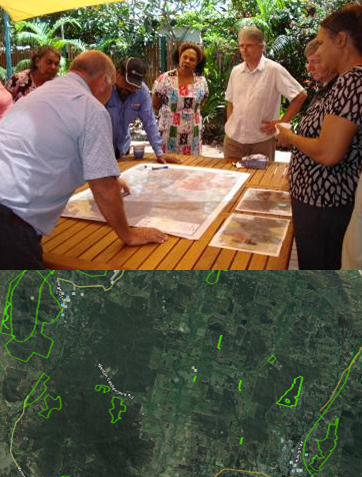Defining Assets
INFFER™ focuses on assets – areas of the natural environment (or the built environment in the case of built heritage conservation) that are considered to have significant value to the community.
An asset is the thing we hope to protect, improve or manage better through a proposed project. It could be large or small, degraded or pristine, localised or dispersed. An asset could be a single localized thing (for example, a particular wetland or river), or it could be a collection of smaller assets, such as remnant vegetation on farms in a region, or agricultural land in a region. It can be defined to be part of a larger asset (e.g. one river reach within a river) or the entire larger asset (the whole river), depending on what the project is intended to achieve.

Elicitation of spatially explicit assets through community workshops is a feature of the INFFER process.
Assets are the ‘gems’ in the region, state, province or local government area. They could be rivers, wetlands, areas of coastal dune, bushland remnants, threatened plants or endangered animals. As long as they exist as a physical entity and their location can be described, INFFER can be used to develop and assess projects that will conserve, manage or repair them.

